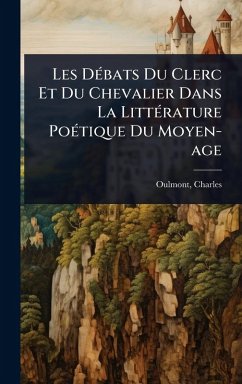Les DÃ(c)bats Du Clerc Et Du Chevalier Dans La LittÃ(c)rature PoÃ(c)tique Du Moyen-age, by Charles Oulmont, offers a historical and literary study followed by a critical edition of texts exploring the debates between the cleric and the knight in medieval poetic literature. This significant work, originally published in 1911, delves into the nuances of medieval French literature, examining the thematic and ideological tensions represented by these two archetypal figures. Oulmont's study provides valuable insights into the social, religious, and cultural contexts that shaped medieval thought and artistic expression. Through a meticulous analysis and critical presentation of the texts, this book remains an essential resource for scholars and enthusiasts of medieval literature, offering a profound understanding of the intellectual landscape of the Middle Ages and its enduring influence on European literary traditions. This work has been selected by scholars as being culturally important, and is part of the knowledge base of civilization as we know it. This work was reproduced from the original artifact, and remains as true to the original work as possible. Therefore, you will see the original copyright references, library stamps (as most of these works have been housed in our most important libraries around the world), and other notations in the work. This work is in the public domain in the United States of America, and possibly other nations. Within the United States, you may freely copy and distribute this work, as no entity (individual or corporate) has a copyright on the body of the work. As a reproduction of a historical artifact, this work may contain missing or blurred pages, poor pictures, errant marks, etc. Scholars believe, and we concur, that this work is important enough to be preserved, reproduced, and made generally available to the public. We appreciate your support of the preservation process, and thank you for being an important part of keeping this knowledge alive and relevant.
Bitte wählen Sie Ihr Anliegen aus.
Rechnungen
Retourenschein anfordern
Bestellstatus
Storno








